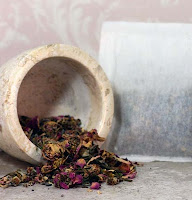 Easter is just around the corner and I found this really cute Easter project from Anne Marie aka The Soap Queen. It is making soap to look like Easter Basket Grass. This project can be found on The Soap Queen's Blog - Soap and the Finer Things.
Easter is just around the corner and I found this really cute Easter project from Anne Marie aka The Soap Queen. It is making soap to look like Easter Basket Grass. This project can be found on The Soap Queen's Blog - Soap and the Finer Things. According to Anne Marie this project will take about 30 minutes of total soaping time, broken up into two sessions. This entire project is very simple and could easily be done with children above the age of 4 with adult supervision. One small obvious safety note, when you are showering with your Easter soap, consider pulling the plastic, sharp-edged objects out of your soap. The little feet in the bird will scratch you and your loved ones in a rather unattractive manner. For this project, Anne-Marie used: White Melt and Pour, Non-Bleeding (Pink & Blue) Colorant Clear Soap,Lilac Fragrance, Labcolor Aqua, and Milky Way Square mold. All of these supplies can be purchased through Brambleberry.com.
You will need the following equipment to complete this project : Spoon, Pyrex or heat safe melting glass, Cheese Grater, and Plastic Dropper. The directions for this project are pretty basic. So follow them to the "T" and it should come out beautifully. And if you would like to take this project a step further, make sure to check out part 2 of this project called Soap Nesting Easter Soaps.


















